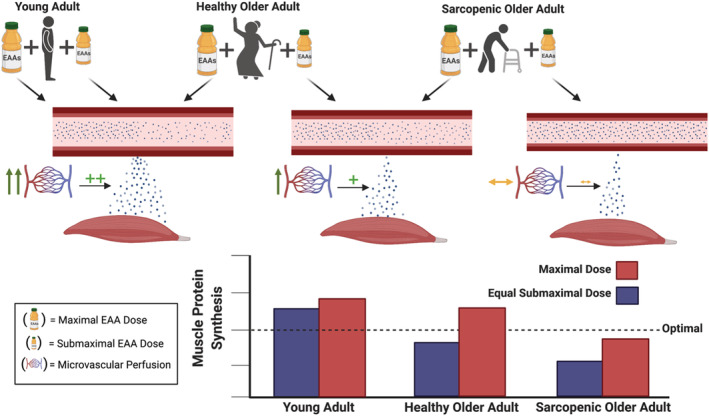Figure 4.

The postprandial skeletal muscle protein synthetic (MPS) response is dependent on amino acid delivery, which is the product of amino acid availability (e.g. concentrations) and blood flow (e.g. perfusion). In healthy younger adults, submaximal doses of essential amino acids (EAAs) are able to optimally stimulate MPS, whereby increasing to a maximal dose of EAAs does not result in further increases in MPS. In older healthy adults, submaximal doses of EAAs are often not able to optimally stimulate MPS, but when maximal doses are given, these individuals are often able to saturate the MPS response. In older sarcopenic adults, neither submaximal nor maximal doses of EAAs are able to optimally stimulate MPS. We propose that a rate‐limiting factor for older adults consuming submaximal and older sarcopenic adults consuming maximal EAA doses to be an inability of the meal consumption to promote adequate skeletal muscle perfusion, resulting in high circulating amino acid concentrations in these populations, but poor delivery and consequently impaired increases in MPS.
